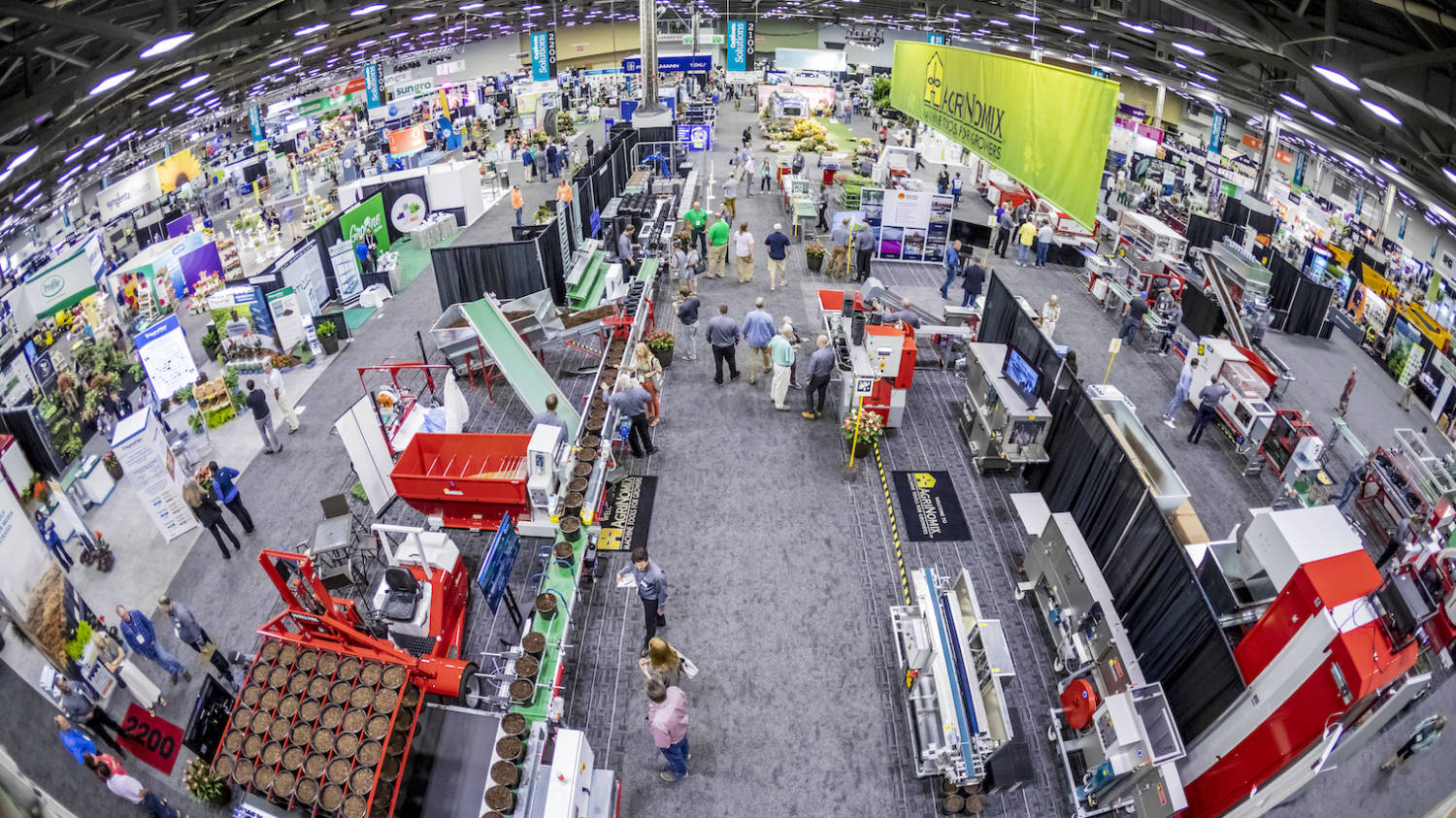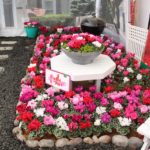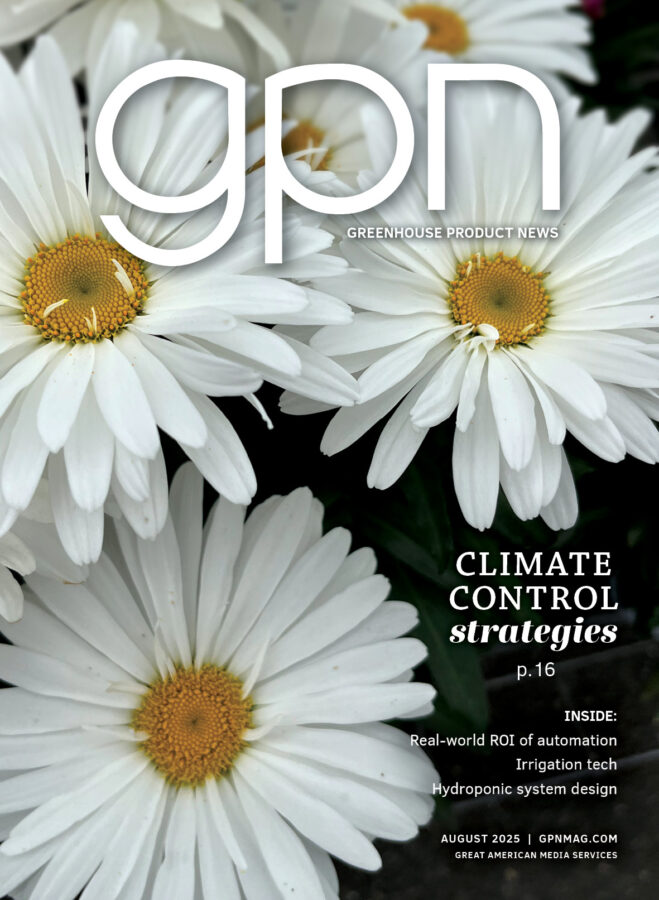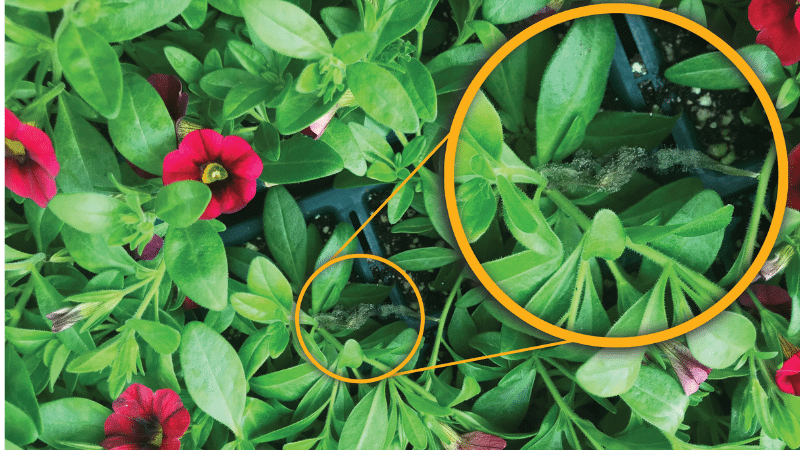
Start clean, stay clean in the greenhouse
I’d love to get your perspective on greenhouse sanitation and how that affects insects and diseases taking over in the greenhouse.
Nancy Rechcigl (NR): We have a phrase, “start clean, stay clean,” and that’s really one of the primary nuts and bolts of starting production and having a successful production cycle. When you’re able to start clean, it’s easier to prevent diseases and pest problems — cleaning up in between your crops, sanitizing the benches, removing any weeds that are in the area. You can have pests like mites and whitefly that live on those weeds in the greenhouse or production area, so it’s really important to clean that up.
There’s also an issue with algae. In production, there’s a lot of water and fertilizer being used to grow the plants, and this is also a good substrate for algae growth. Two of the pests that actually really like to feed on algae are shore flies and fungus gnats. So, cleaning up and sanitizing the floors, aisles and underneath benches can help prevent problems with those types of pests as well.
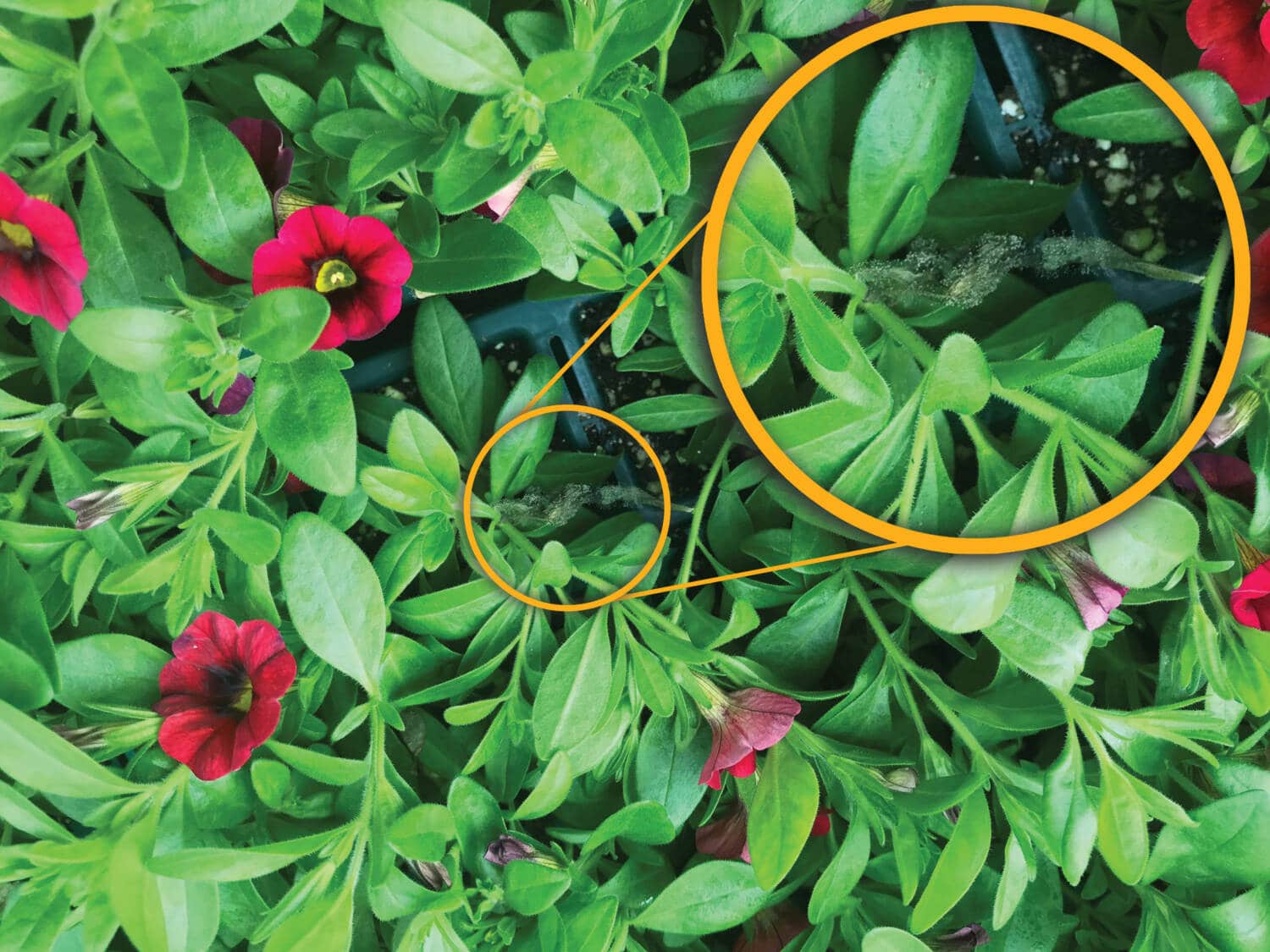
Do you have specific recommendations for how to sanitize a greenhouse before starting — are there any specific sprays or protocols in place for that?
NR: Well, there’s a number of different products on the market. There’s quaternary ammonium compounds, a number of them, and there are some that are based on hydrogen dioxide; so any of those products will work. These tend to be less corrosive than a 10% to 20% bleach solution, which is also used. It’s important to remove the organic debris from benches and sidewalks, sweep up the excess media, get leaf tissue picked up and then, typically, you treat the surface with those products.
I can’t endorse any one particular product, but the products are useful. The key is the wetting time. For instance, with a lot of the quaternary ammonium products and many of the other products, they require at least 10-15 minutes of wet time in order to kill the pathogens.
Follow the directions on the label. You want to avoid sanitizing during the heat of the day. Early morning or later in the day is best, when the product can stay wet for that period of time.
When you say underneath the benches, what specifically are you talking about?

NR: Well it depends on what is underneath the benches. If you have a ground cloth or cement, it’s easier to clean up organic debris after the previous crop. It’s also easier to sanitize because there’s no place for pests to harbor. If you have a greenhouse where there’s native soil or gravel under the benches, sometimes it’s difficult to remove the media that’s fallen down below the bench.
You can still treat under the bench, but it’s a little bit more challenging because you can’t totally remove the organic material.
Once you have your greenhouse sanitized and you bring everything in to keep it pest and disease free, do you have any tips for maintaining the cleanliness?
NR: When you start clean, it’s easier to stay clean because you’re starting with a greenhouse that doesn’t have any insect pressure; it’s easier to maintain.
There are products that you can use during production for control of fungus gnats and shore flies. Citation insecticide controls both pests and you can generally apply it, usually in propagation where the pests tend to be more of an issue early on. You’re maintaining those conditions; that you can stay clean with those types of applications.
There are different predatory mites, like Hypoaspis miles, that you can release underneath the benches. Like those benches that have gravel, where maybe it’s difficult to get treatments on the floor, this can help maintain or reduce the populations of those pests under benches.
You’re going to make preventive applications to keep these pest problems from developing in the greenhouse. And generally, if you start clean, it doesn’t require as many preventive applications to keep them out because you’re keeping pressure to a low, manageable level with your applications, making sure that some plants are protected and they don’t develop any issues.
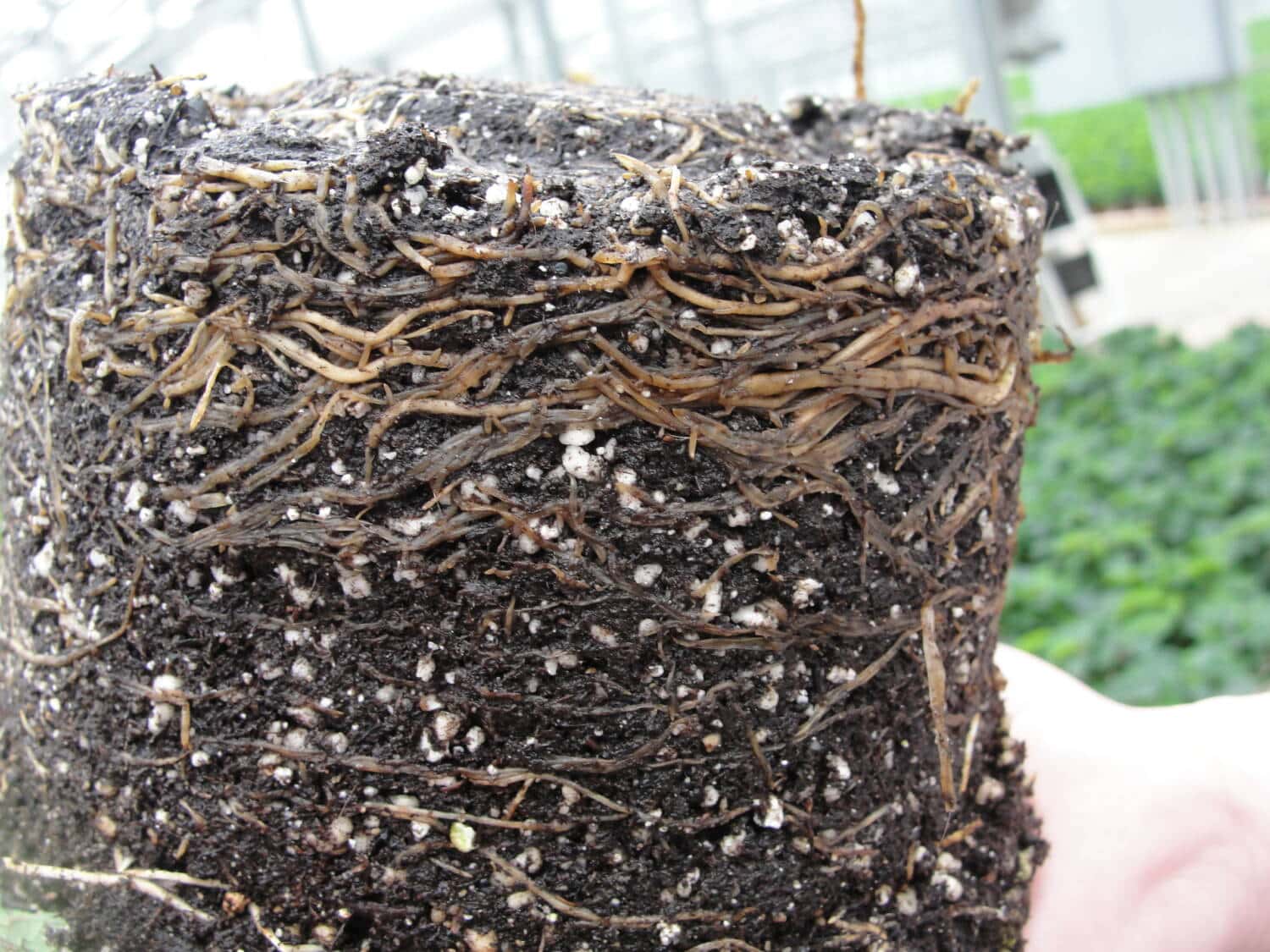
As a grower, you still need to have a good pest management program to stay clean, do you agree?
NR: Yes, you do, and you have to have scouting. It’s really important to scout the plants — monitor them on a regular basis — so that you can catch problems early before they develop into bigger problems. That way you can provide the solutions for treating them before it’s too damaging to the crop.
Is there anything else on greenhouse sanitation you think is important to share?
NR: I will add that it’s really important to clean up the production area in between your crop cycles. When you’re done shipping one crop out, make sure you go in and clean up those areas. It really does help prevent other problems from developing in the new crops that you introduce to that area.








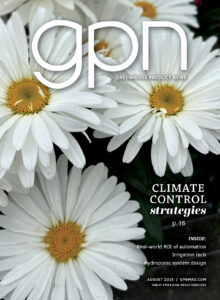
 Video Library
Video Library 
